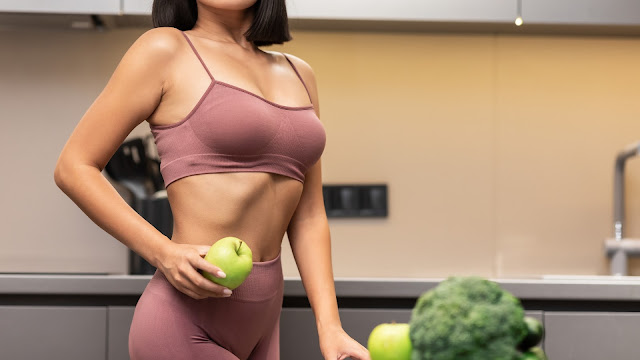Recipes for a Skinny Life
The smoothie recipes in 365 Skinny Smoothies are nutritional elixirs meant to assist in weight reduction and enhance energy. As a nutritionist, I know that smoothies are a dream come true since they may be a vehicle for macronutrients such as protein, essential fatty acids (EFAs), and complex carbs, as well as micronutrients such as vitamins, minerals, and phytonutrients.
I began creating smoothies 20 years ago when I dealt with cancer patients who required concentrated doses of protein and minerals to strengthen their immune systems during their recovery journey. I realized that nutrient-dense foods and supplements may be mixed with tasty recipes to make strong healing beverages that taste wonderful.
I rely on peer-reviewed studies and carefully select the information I use when creating recipes for specific health outcomes. Therefore, when making the weight-loss smoothies in 365 Skinny Smoothies, I went through hundreds of food-nutrient studies to determine the most effective ingredients for growing muscle and lowering body fat. The medicinal smoothie recipes in this book will help you lose weight in numerous ways, such as lowering body fat storage by decreasing insulin stimulation, reducing cellulite by stimulating the release of stored water (edema), and enhancing enzymes that will help shed body fat.
A fast search for weight-loss smoothies online will bring up a multitude of misinformation as well as high-calorie, sugar-laden recipes developed by smoothie aficionados who may not know much about nutrition. However, the research linked here and the dietary advice are all based on empirical facts. When you incorporate these smoothies into your daily routine, combined with exercise and a balanced diet, these recipes may have a dramatic and immediate impact on your health and weight.
YOUR KITCHEN AS A LEARNING LAB
By trying out the recipes in this book, you are practically establishing a lab in your home by testing different nutrients that accelerate weight reduction. Each recipe introduces a weight-loss concept, such as adding probiotic supplements and cultured foods; increasing phytochemicals found in greens and berries; increasing spices that reduce inflammation; hydrating with electrolytes; stocking up on frozen berries and dry goods; and adding protein such as hemp, chia, or protein supplement powders to your smoothies.
You’ll rapidly grasp the fundamentals of smoothie creation, and you’ll soon be ready to start creating your own smoothies depending on your taste preferences and nutritional requirements. For example, my favorite morning combo is coconut water, banana, nonfat Greek yogurt, wild blueberries, protein powder, and probiotic powder (see the January 30 recipe, “Chace’s Morning Boost,” in Chapter 4). However, everyone’s preferences and requirements differ, so you may prefer, for instance, cherry juice for the base, and you may need extra vitamin C. Thus, you can opt to include citrus and greens in your morning smoothie recipe.
Preserve & Savor:
Maximizing Freshness with Perishable Ingredients
The recipe chapters are sorted by perishable ingredients—this implies that each month’s meals are grouped together according to their main component in order to simplify your shopping load. This helps you to use up the fresh goods that you’ve bought, so there is less waste, and you won’t have to stock your refrigerator with too many new things all at once. If you follow the book from beginning to finish, you will purchase the least amount of new foods each week.
In addition, seasonal foods are the emphasis for each month, which makes it simpler to discover items that aren’t accessible year-round. Keep in mind that you can always adjust a recipe if you can’t locate a certain item, so it’s not essential for you to seek down anything odd or hard to find in your region. I’ve included suggestions for replacements to use when you’re short of a certain component in the ingredient list supplied in Chapter 2.
Rest assured that the recipes in this book are all low-calorie. The ones that contain less than 250 calories are regarded as snacks—little pick-me-ups to drink between meals or as a complement to a light meal. You may have these smoothies numerous times during the day without adding up the calories. There are a few smoothies that have more than 250 calories, and they may be utilized as meal replacements.
With each recipe, you’ll get the quantity of calories, fat, carbs, fiber, and protein for each smoothie. The objective in preparing a balanced smoothie is to keep the calories and fat content low (unless the fat is from a healthy source such as avocado) and to have as much fiber and protein as feasible. The nutritional content breakdowns are presented per serving. Others of the recipes are simply one serving, while others are bigger and create two dishes. Recipes may be multiplied easily or cut in half to fit your requirements, depending on whether you’re preparing smoothies for one or two individuals.
In the ancient days, we had milkshakes and slushy-type beverages with gobs of fat, sugar, calories, and food coloring. Now we know that we can prepare healthful smoothies that have a “comfort food” texture and taste without all of the bad additives. To this purpose, these smoothies are not only packed with weight-loss nutrients but also pleasant and filled with a delightful taste.
Each smoothie is constructed of a combination of protein and fiber to allow for a delayed release of the carbs, which gives your body time to burn the calories as energy rather than store them as fat in the thighs or abdomen area. The recipes also include important fatty acids that stimulate the enzymes that help us release the body fat we currently have so we can burn it for energy as well. Many of these recipes have natural fiber from their fruits, vegetables, seeds, and nuts; however, adding a half teaspoon of a fiber supplement to each smoothie can further lessen the glycemic load of the smoothie, which means you’ll receive an even longer energy boost. All you really need to get started is a blender, a liquid (which may be as easy as water), fresh or frozen food (such as a banana), and some protein (nuts, seeds, or protein powder). Toss them in your blender or food processor, mix until smooth, and drink straight away.
A YEAR OF EXPLORING SMOOTHIES
Keep in mind that everyone’s taste buds are different. Others love hot and spicy, others prefer sour, and some favor sweet and creamy. This book offers something for everyone. My goal is to expose you to a variety of different tastes and combinations each month so that you can test them until you find your favorites.
Conclusion
In the next chapter, I will uncover several intriguing and little-known dietary secrets. I discuss methods that I give to customers to help them reduce weight. As you make your way through the recipes in this book, you will be adopting these tactics and learning from experience which ones work best for you.
I hope you enjoy experiencing the tastes of life while you rejuvenate your body, one smoothie at a time!




.jpg)


